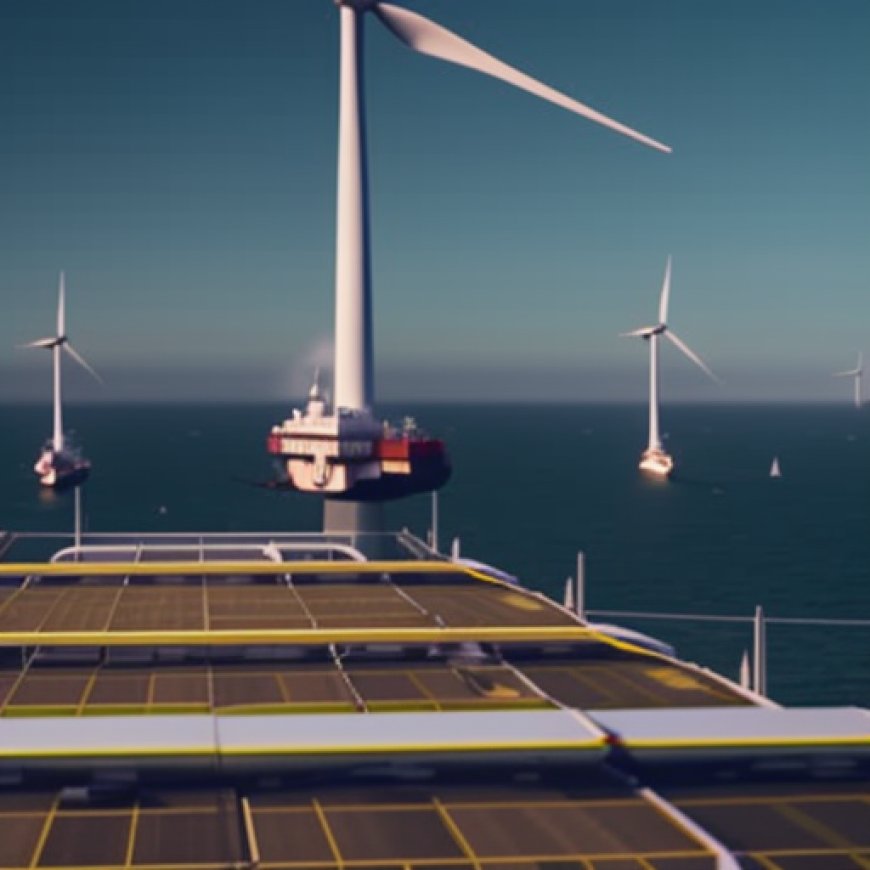Heavy lift drones deliver critical cargo to offshore wind turbines


Ørsted Launches World’s First Heavy Lift Cargo Drone for Offshore Wind Farms

Following successful trials last year at a UK wind farm, Denmark’s Ørsted has now put heavy lift drones to work at a 94-turbine offshore wind farm in the North Sea – completing resupply missions up to 15 times faster while also reducing costs.
Introduction
Offshore wind farms are a vital part of the renewable energy mix, but getting necessary supplies out to turbines can prove both costly and time consuming. Energy company Ørsted partnered with transport/logistics company DSV in 2022 to trial drone delivery of components to technicians working on turbines instead of transporting them from shore by ship.
Successful Trials and Operational Campaign
Last October, another trial at the Hornsea 1 Offshore Wind Farm in the UK involved heavy lift drones able to haul 68 kg (150 lb) of cargo from support vessels up to a turbine’s nacelle much quicker than using cranes. Now the company has deployed larger drones for an operational campaign at the Borssele 1&2 Offshore Wind Farm off the Dutch coast in the North Sea, which Ørsted constructed in 2020.
Benefits of Heavy Lift Drones
The campaign involves transporting critical evacuation and safety equipment to each of the Farm’s 94 Siemens Gamesa 8-MW turbines. This would normally involve sending a vessel to each turbine, employing a crane to heft the gear up to the transition piece. The nacelle’s crane then takes over and lifts the package to the top of the turbine. Ørsted says that this approach can take around 6 hours per turbine.
By comparison, a heavy lift drone – which can accommodate cargo up to 100 kg (220.5 lb) – will take a supply box from the support vessel, fly to the top of the nacelle, safely deliver it and then return to the support vessel for the next one, and repeat until the mission is completed. Each trip is reported to take around 4 minutes, which Ørsted reckons makes the whole operation run 10-15 times faster.
Impact on Sustainable Development Goals
The use of heavy lift drones in offshore wind farms aligns with several Sustainable Development Goals (SDGs), including:
- SDG 7: Affordable and Clean Energy
- SDG 9: Industry, Innovation, and Infrastructure
- SDG 13: Climate Action
- SDG 17: Partnerships for the Goals
The company also expects to save on operational costs, improve safety, and perform such missions without needing to shut down a turbine while the cargo is delivered. Carbon emissions should also be reduced, as the need for multiple journeys by ship is minimized. All of which will “further improve the commercial fundamentals of offshore wind for investors, governments, and corporations” according to Rasmus Errboe, Chief Commercial Officer and Deputy CEO at Ørsted.
Conclusion
Ørsted’s use of heavy lift drones in offshore wind farms demonstrates the potential for innovative solutions to address the challenges of supply logistics in renewable energy projects. By leveraging drone technology, Ørsted is able to significantly improve efficiency, reduce costs, and contribute to the achievement of the Sustainable Development Goals.
Source: Ørsted
SDGs, Targets, and Indicators
| SDGs | Targets | Indicators |
|---|---|---|
| SDG 7: Affordable and Clean Energy | 7.2: Increase the share of renewable energy in the global energy mix | Not mentioned in the article |
| SDG 9: Industry, Innovation, and Infrastructure | 9.4: Upgrade infrastructure and retrofit industries to make them sustainable | Not mentioned in the article |
| SDG 13: Climate Action | 13.2: Integrate climate change measures into national policies, strategies, and planning | Not mentioned in the article |
| SDG 15: Life on Land | 15.1: Ensure the conservation, restoration, and sustainable use of terrestrial and inland freshwater ecosystems | Not mentioned in the article |
1. Which SDGs are addressed or connected to the issues highlighted in the article?
The issues highlighted in the article are connected to SDG 7: Affordable and Clean Energy, SDG 9: Industry, Innovation, and Infrastructure, SDG 13: Climate Action, and SDG 15: Life on Land.
2. What specific targets under those SDGs can be identified based on the article’s content?
Based on the article’s content, the specific targets that can be identified are:
- SDG 7.2: Increase the share of renewable energy in the global energy mix
- SDG 9.4: Upgrade infrastructure and retrofit industries to make them sustainable
3. Are there any indicators mentioned or implied in the article that can be used to measure progress towards the identified targets?
No indicators are mentioned or implied in the article that can be used to measure progress towards the identified targets.
4. Create a table with three columns titled ‘SDGs, Targets and Indicators” to present the findings from analyzing the article. In this table, list the Sustainable Development Goals (SDGs), their corresponding targets, and the specific indicators identified in the article.
| SDGs | Targets | Indicators |
|---|---|---|
| SDG 7: Affordable and Clean Energy | 7.2: Increase the share of renewable energy in the global energy mix | Not mentioned in the article |
| SDG 9: Industry, Innovation, and Infrastructure | 9.4: Upgrade infrastructure and retrofit industries to make them sustainable | Not mentioned in the article |
| SDG 13: Climate Action | 13.2: Integrate climate change measures into national policies, strategies, and planning | Not mentioned in the article |
| SDG 15: Life on Land | 15.1: Ensure the conservation, restoration, and sustainable use of terrestrial and inland freshwater ecosystems | Not mentioned in the article |
Source: newatlas.com








